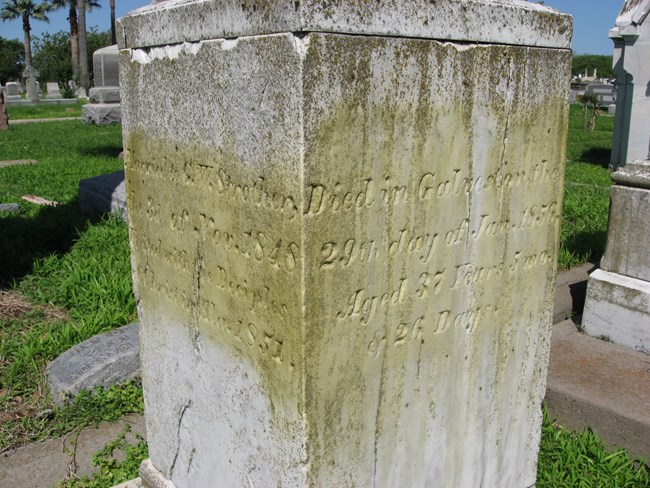Last updated: April 7, 2025
Article
Shaving Cream: Genealogist’s Friend or Cemetery Conservator’s Foe?

National Park Service
Here at NCPTT we get a lot of calls and e-mails concerning cemetery care and preservation. This question came in this week from Daniel Kester of Williamsville, N.Y. I decided to post his question and our response because lots of people may have the same question.
Question: I am interested in genealogy, and one ongoing discussion in the genealogical community is whether it is “okay” to use shaving cream on gravestones to read them easier (fill the writing with shaving cream, then squeegee it off, so that the writing is highlighted in white). Some say that there are chemicals in shaving cream that damage the stone; others say it won’t do any harm. My suspicion is that none of them (on either side of the argument) know what they are talking about; at best they are guessing at what they think might happen.
Answer: We do not advocate the use of shaving cream for investigating inscriptions on stone. The shaving cream has natural emollients for softening the skin. These emollients have oils and moisture holding agents that can have detrimental effects on the stone. The emollients can stain the stone by penetrating into the porous material. They are very appealing nutrients to bacteria, fungi, and mold, and because the oils stay on the surface, they attract dirt. This leads to biological deterioration over the long term.
Other ways to study hard-to-read inscriptions include the use of lighting and mirrors or water. A car sun shade or photographer’s reflector can be used to bounce light on to the stone from an angle. Raking light can assist in making a carving more legible. Also, simply wetting the stone with water from a spray bottle can change the reflectance of the stone surface enough to make out the inscription. Researchers funded by NCPTT are working on more high-tech methods, too. Cultural Heritage Imaging, a non-profit out of California, is using reflectance transformation imaging to study surfaces that are hard to read, like rock art.

